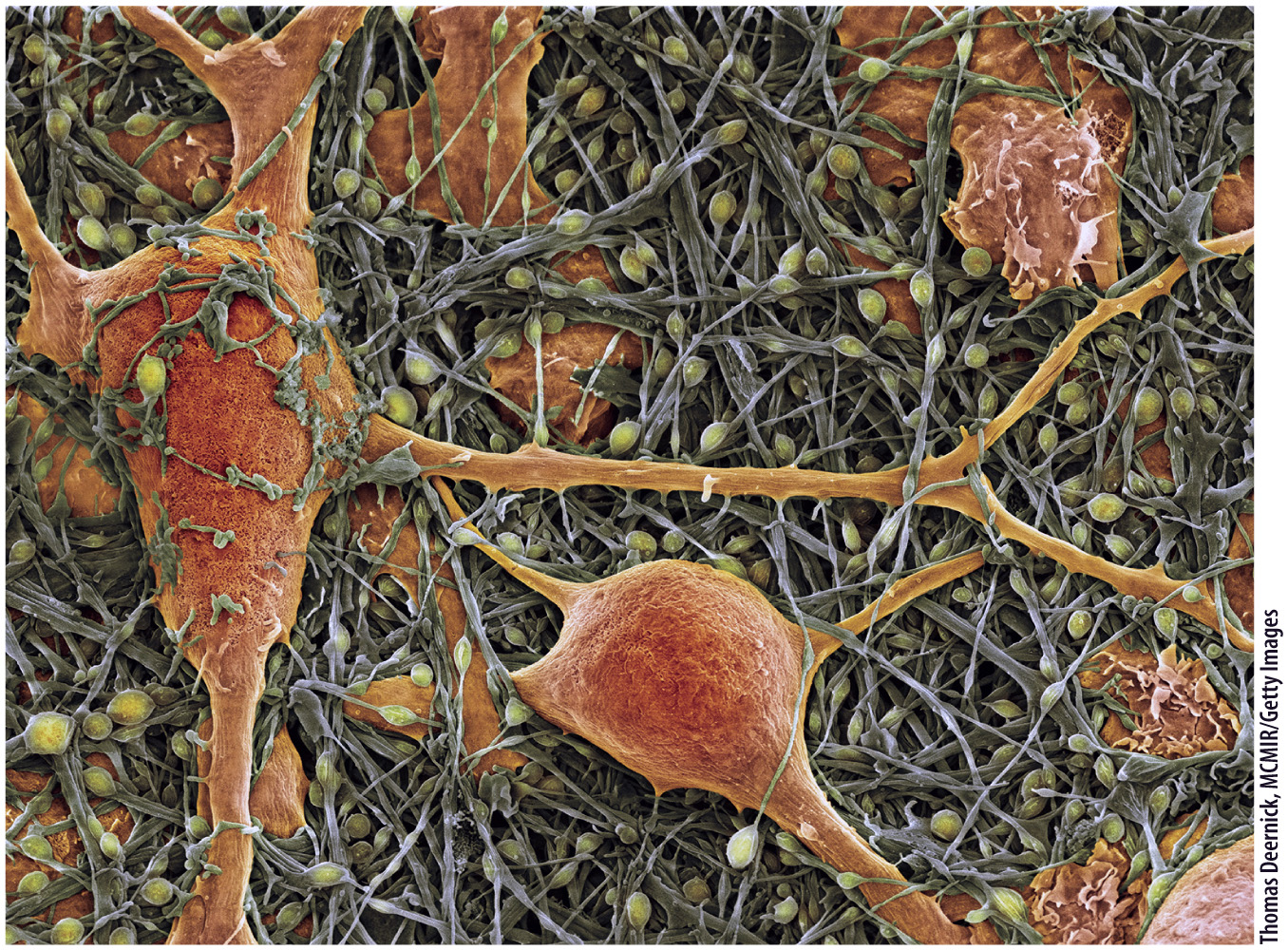Chapter 35 Introduction
739
CHAPTER 35
Animal Nervous Systems

Core Concepts
- Animal nervous systems allow organisms to sense and respond to the environment, coordinate movement, and regulate internal functions of the body.
- The basic functional unit of the nervous system is the neuron, which has dendrites that receive information and axons that transmit information.
- The electrical properties of neurons allow them to communicate rapidly with one another.
- Animal nervous systems can be organized into central and peripheral components.
740
Gazelle grazing on an African plain are alert to the threat of predators nearby. Members of the herd scan the distant landscape for visual cues that might reveal the stealthy approach of a cheetah (Fig. 35.1). Olfactory (smell) and auditory (sound) cues from the environment can also warn of the cheetah’s approach. Herd members communicate the presence of the cheetah to one another by the directed attention of a dominant male or the pawing of a hoof. At what point is the threat real? When does each animal decide to stop grazing and turn to run? What direction should the escape take to keep the herd together as a group?
The cheetah scans the horizon, its keen vision spotting the grazing gazelle. The cheetah’s ability to recognize wind direction enables it to move downwind of the gazelle to minimize auditory and olfactory cues that might otherwise be carried by the air toward suspecting prey. At what point does the cheetah decide to sprint in pursuit of its quick-

The perceptions and reactions of these two animals depend on the activity of their nervous systems. In this and the following chapter, we explore the organization of the nervous system, including the brain and the nerve cells that compose it. The nervous system has the remarkable ability to process all kinds of information. It takes in information from the environment through the animal’s sensory organs and processes that information through the activity of networks of nerve cells. The results of that processing guide an animal’s motor responses. Nervous system processes underlie the perceptions and interaction of cheetah and gazelle as predator and prey, as well as the complex emotional and cognitive responses triggered, for example, by seeing a friend or relative after a long separation.